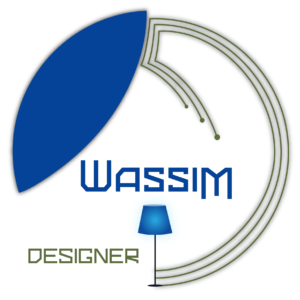
At first, I chose my theme modern furniture. Then, I started searching on how I can present my theme and develop it into a mood board. I thought about what feel I want to present to the reader and what typeface I wanna choose. For me, circle presents the most modern shape and therefore the best way to show my theme. I presented technology on the shape on the right as I wanted to show the connection between every smart object. I connected the lines to a lamp that shows modern furniture and tried to play with the colors In order to show the 3D effect. Then, I used the shape on the left to show the floating feel. Finally, I used a modern typography that represents technology and played with the characters size in order to balance my logo.
